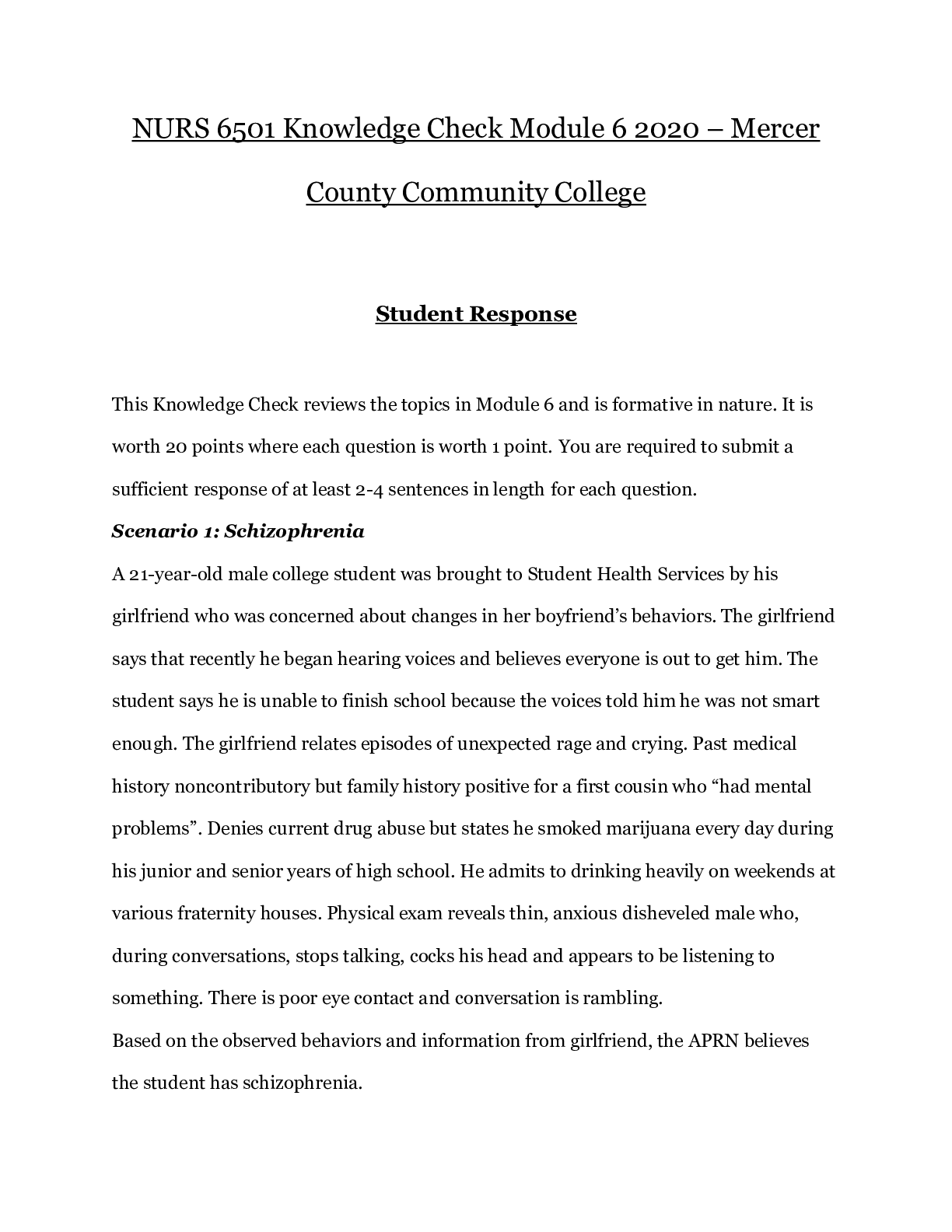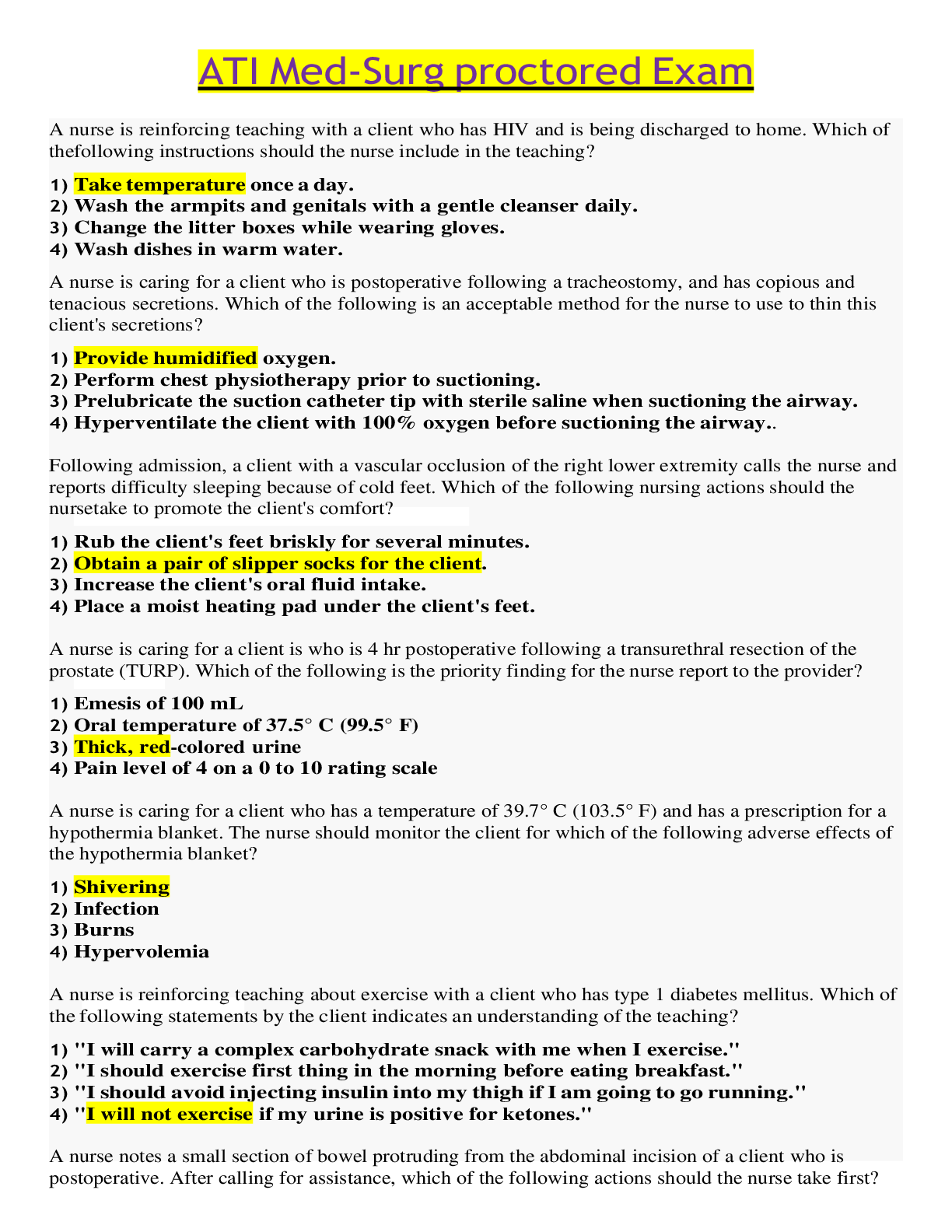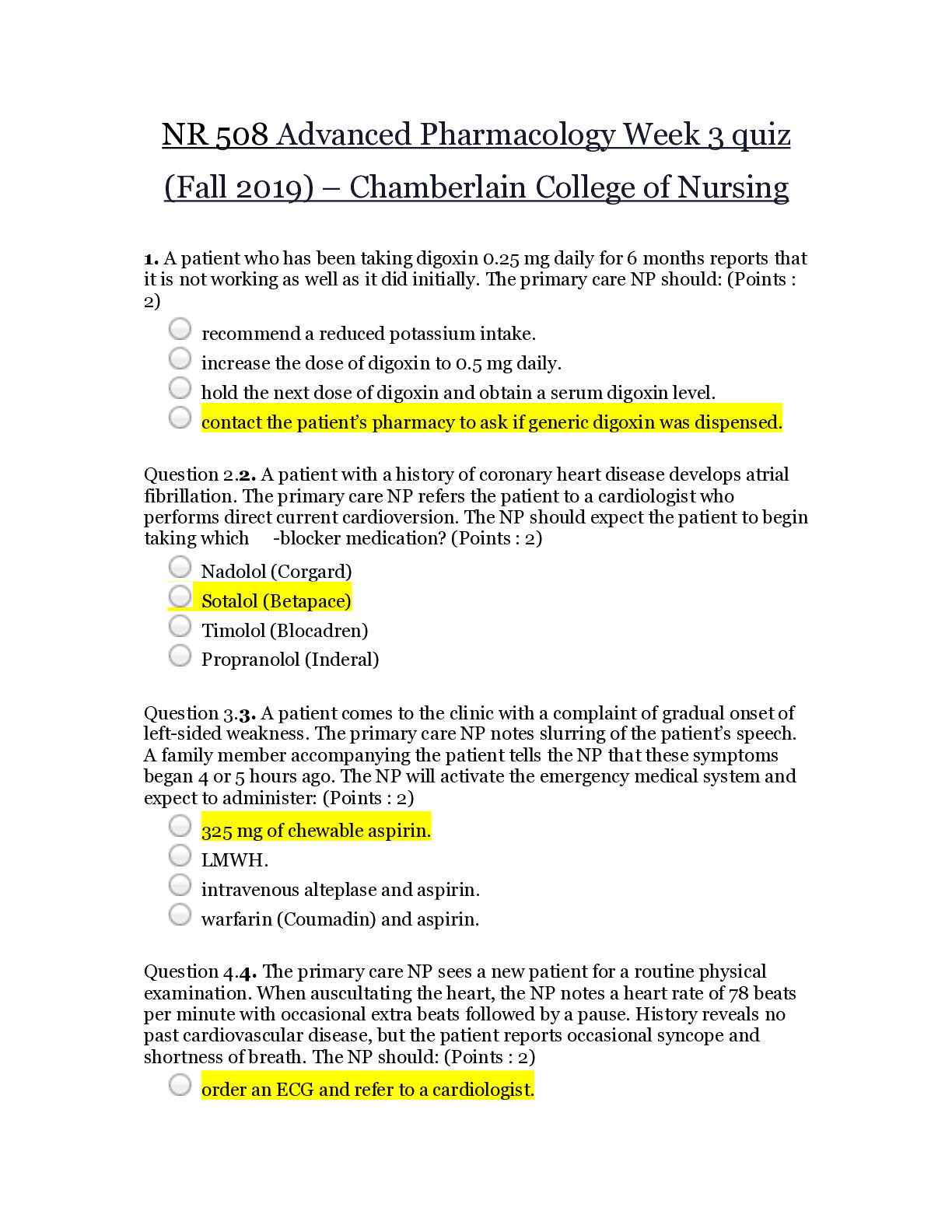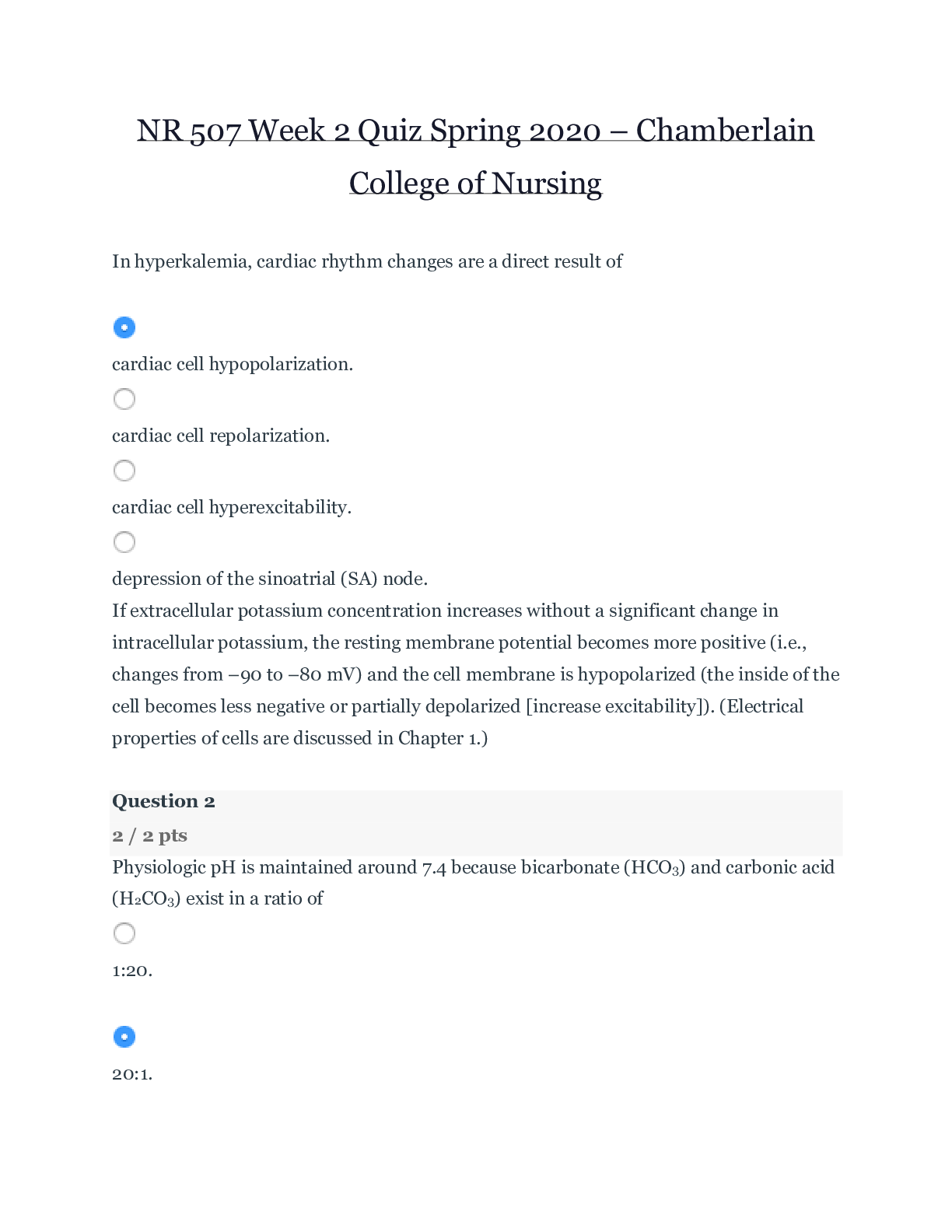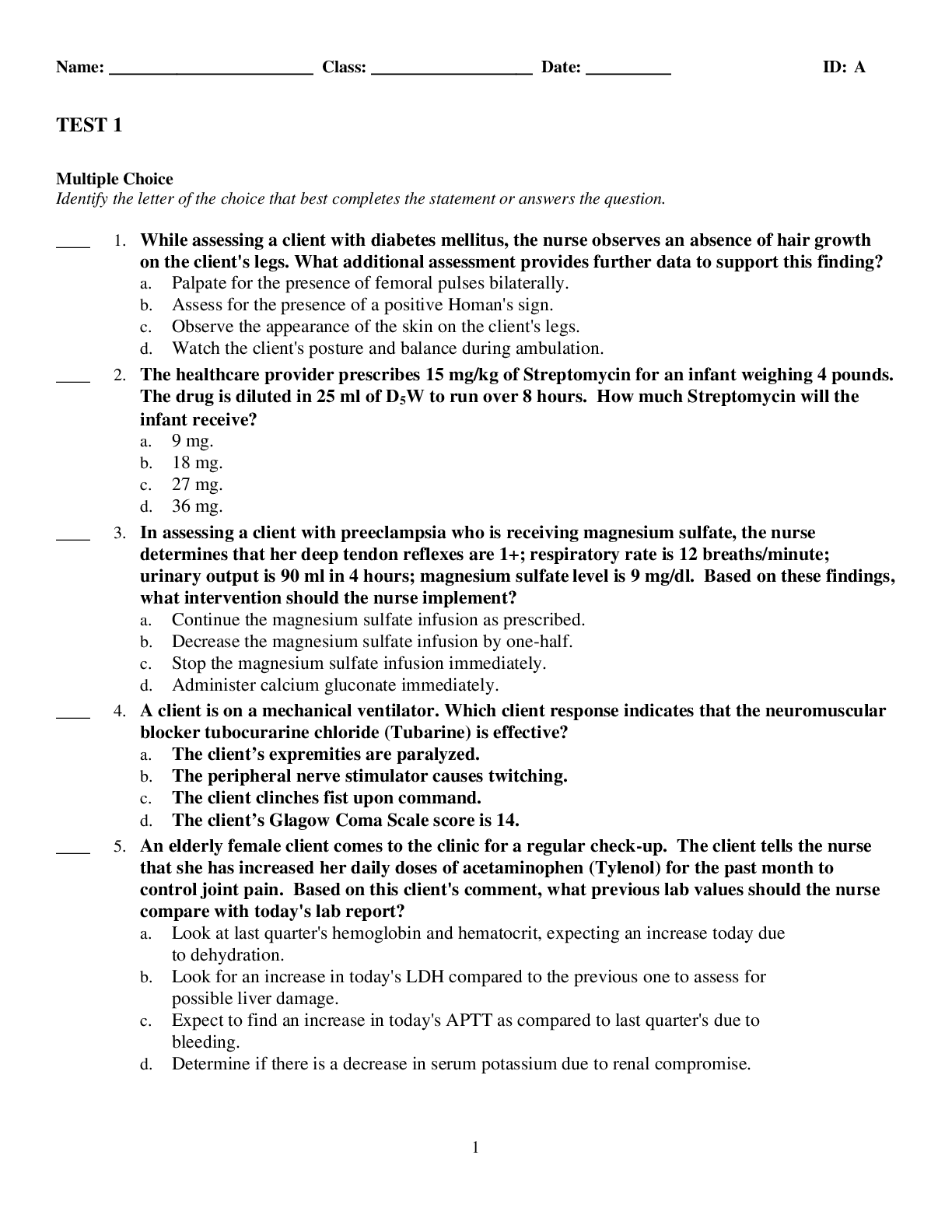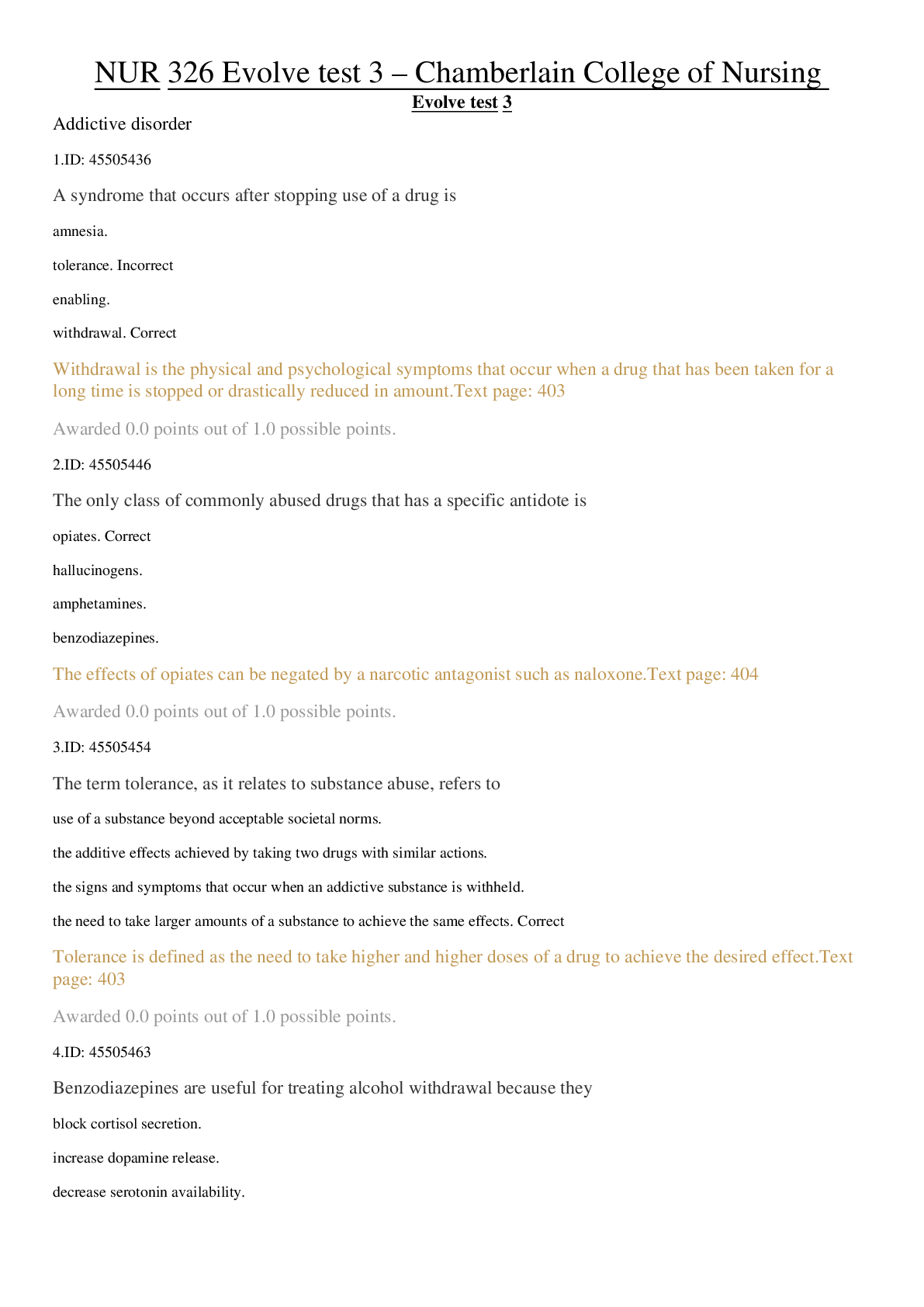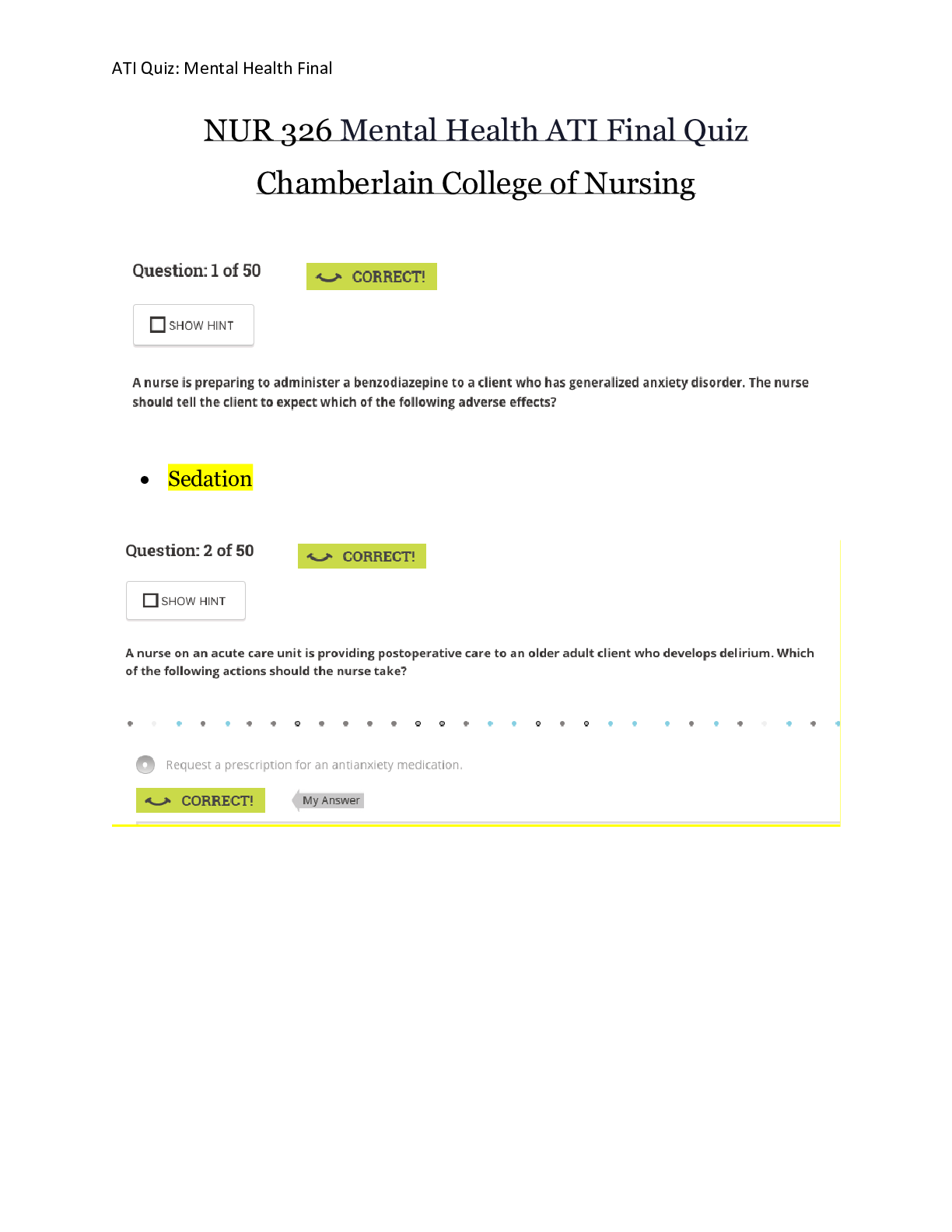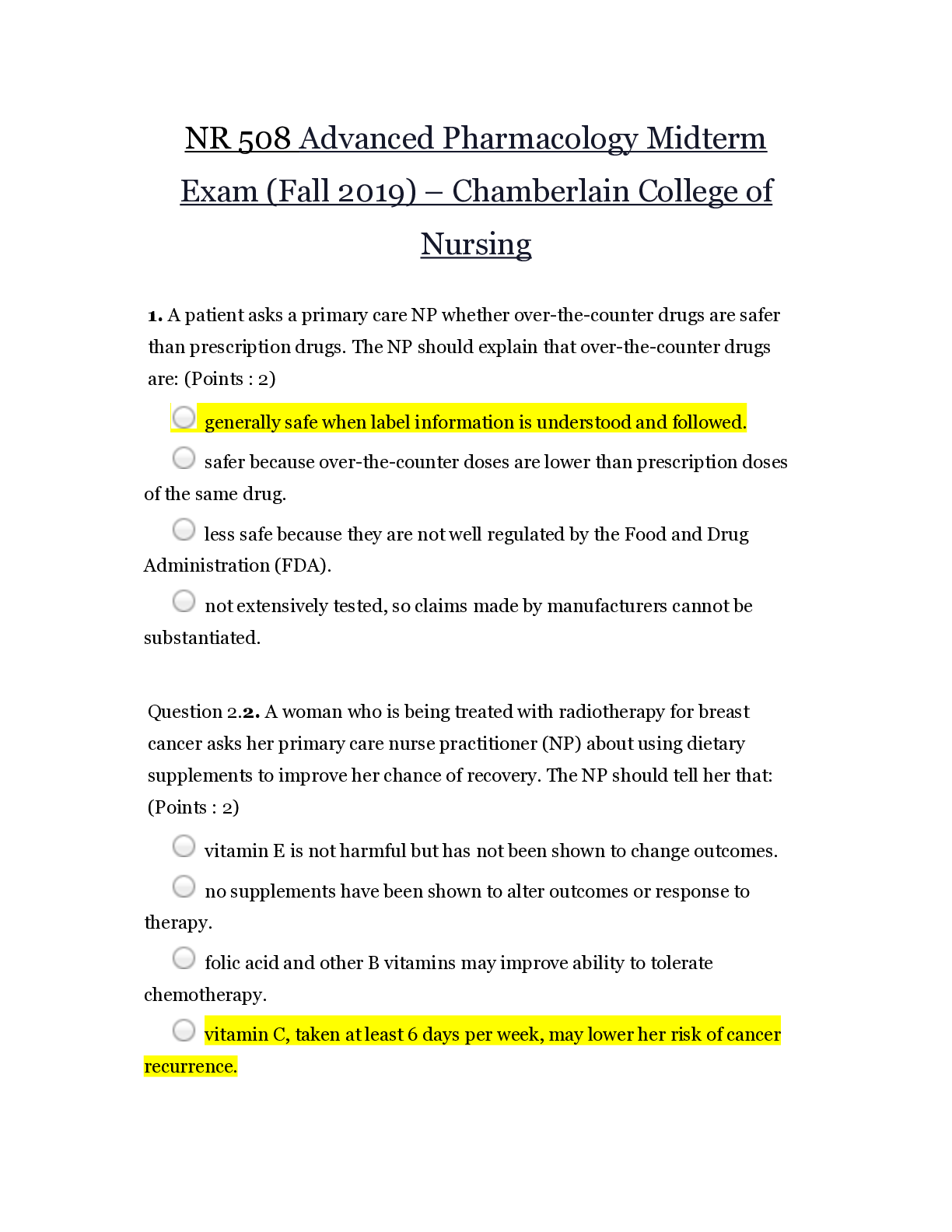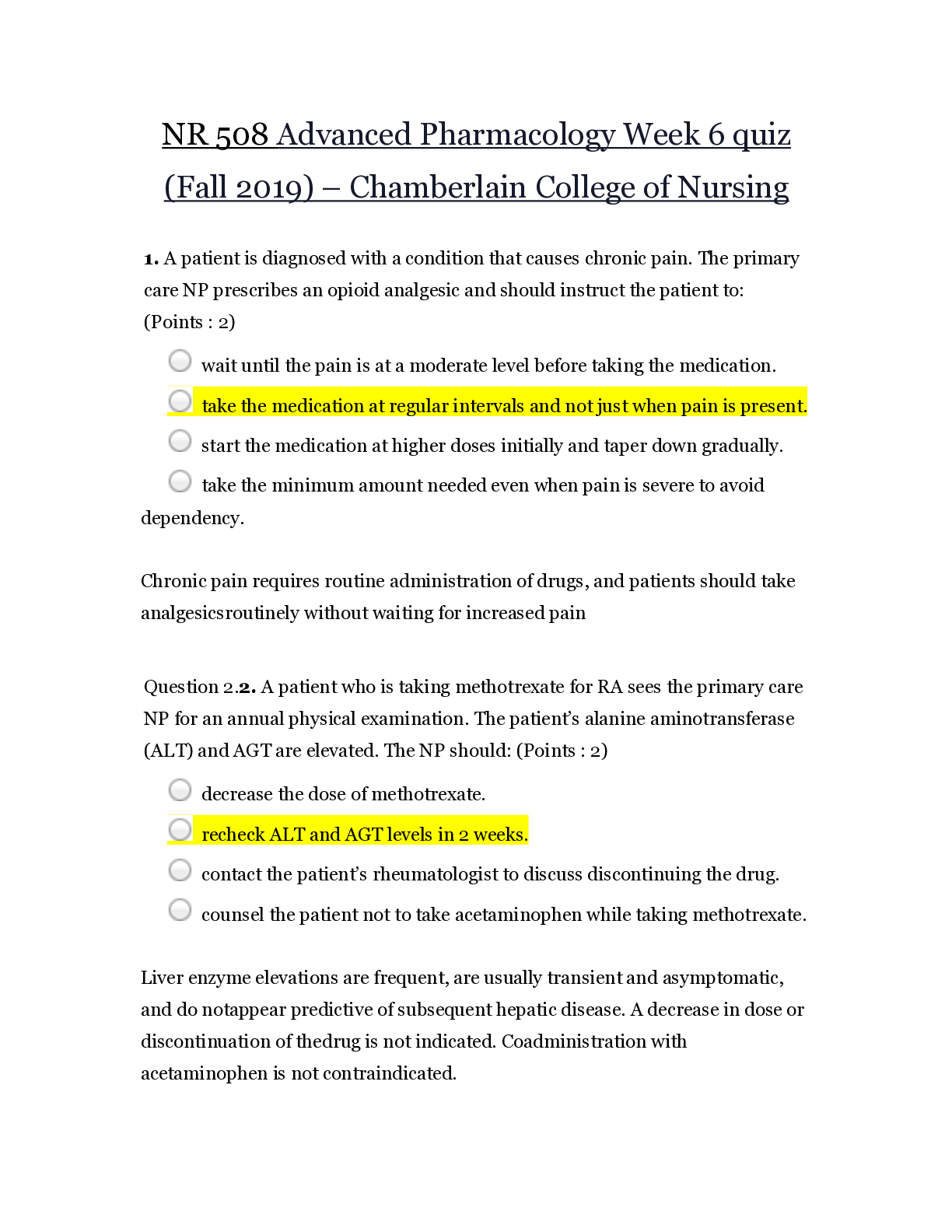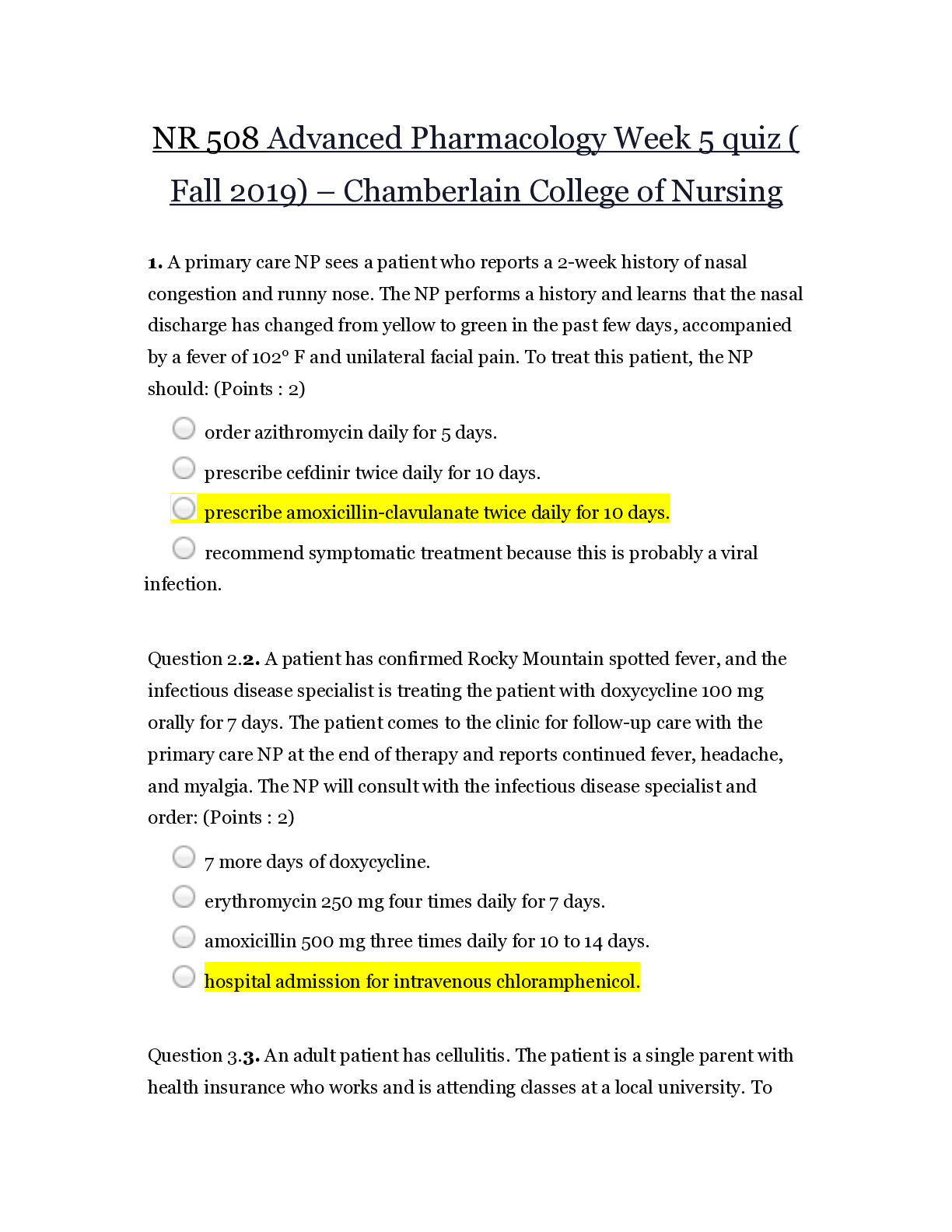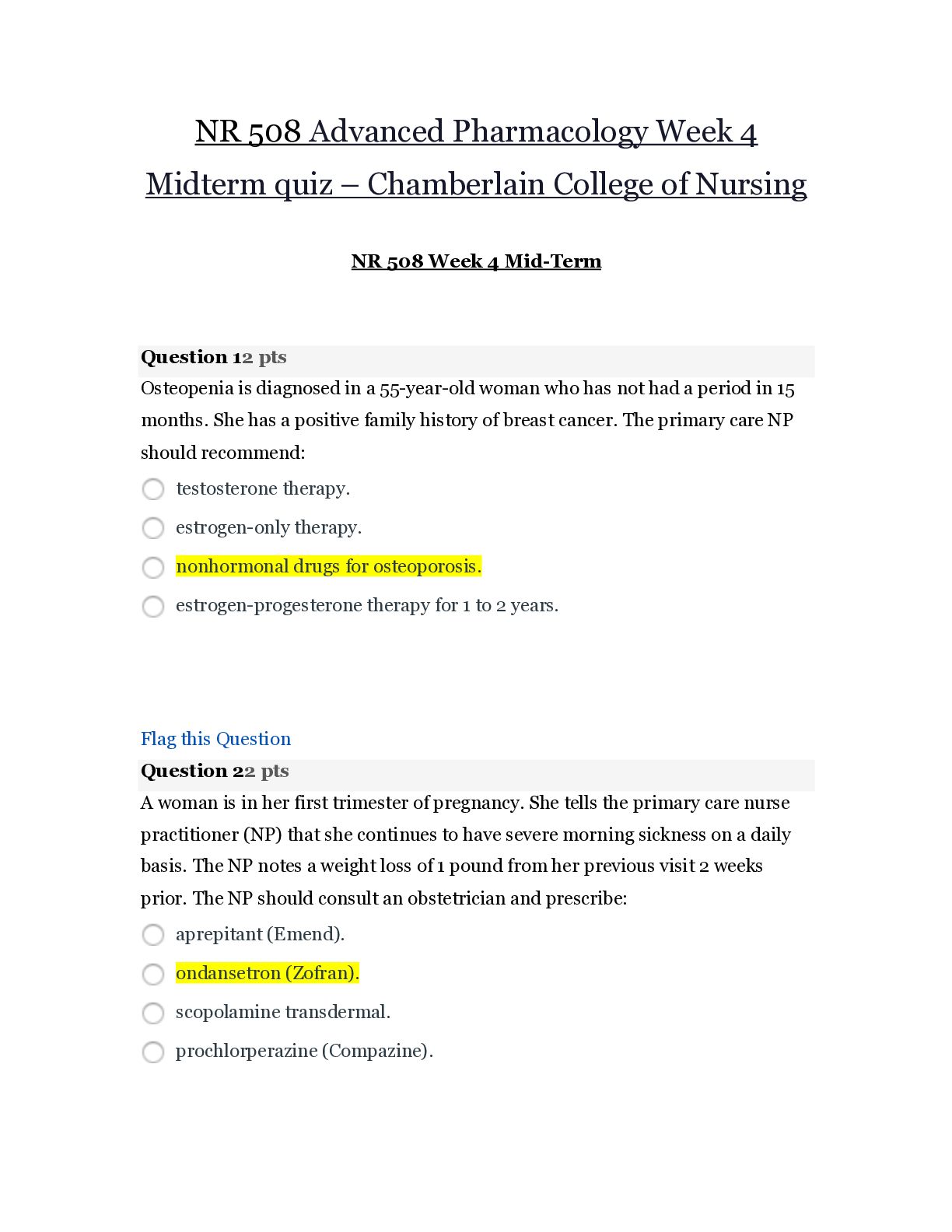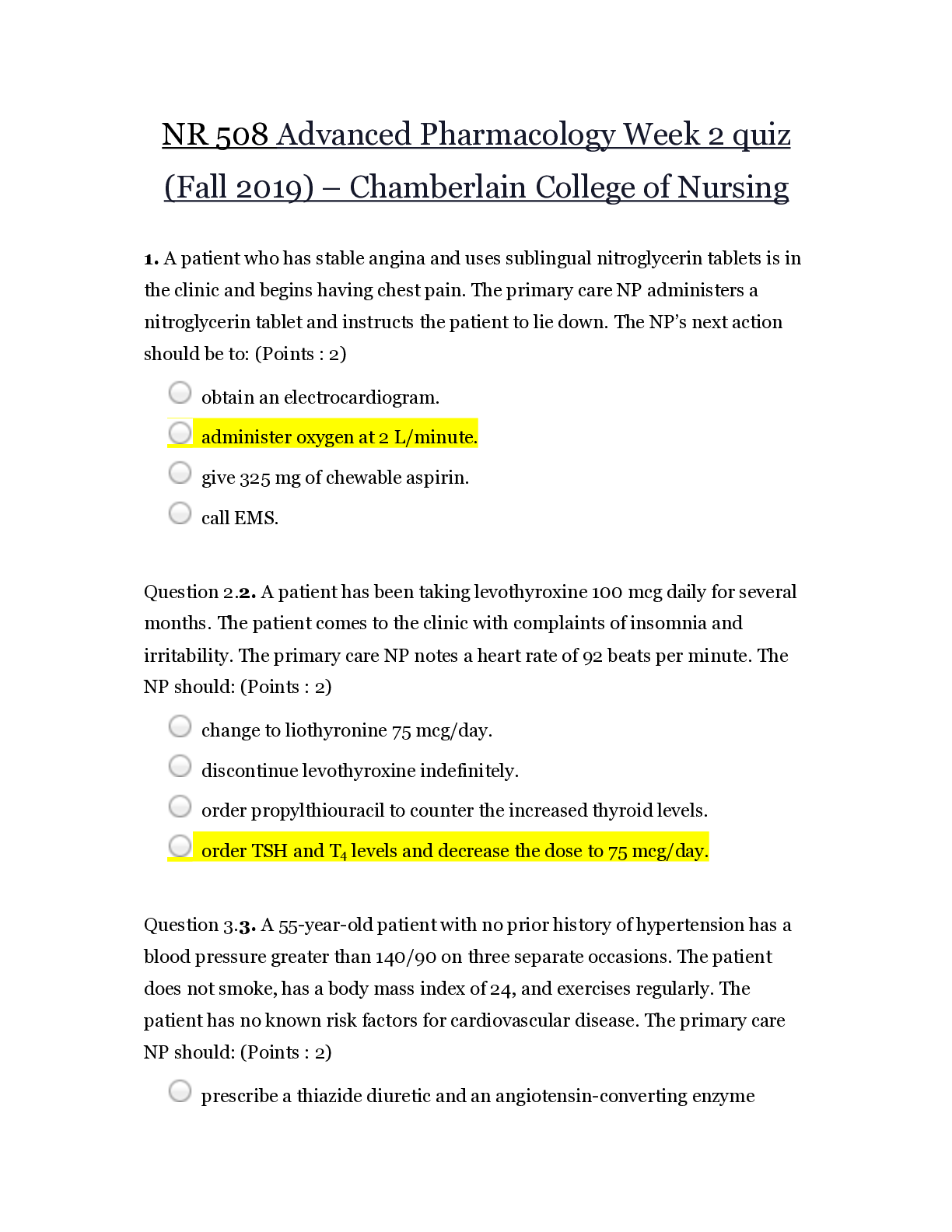*NURSING > EXAM > NR 293 Unit 5 & 6 Key Terms – Chamberlain college of nursing | NR293 Unit 5 & 6 Key Terms (All)
NR 293 Unit 5 & 6 Key Terms – Chamberlain college of nursing | NR293 Unit 5 & 6 Key Terms
Document Content and Description Below
NR 293 Unit 5 & 6 Key Terms – Chamberlain college of nursing Unit 5 & 6 Key Terms Glomerular filtration · The fluid filtered by the glomerular capillary filtration membrane is prote... in free but contains electrolytes and organic molecules (creatinine, urea, glucose) in the same concentration as found in plasma · Freely permeable to water and impermeable to large colloids · Capillary pressure also affects filtration. The hydrostatic pressure within the capillary is the major force for moving water and solutes across the filtration membrane and into Bowman capsule · Combined effect of forces favoring and forces opposing filtration determines the filtration pressure · While the protein free fluid is filtered into Bowman capsule, the plasma oncotic pressure increases and the hydrostatic pressure decreases Glomerular filtration rate (GFR) · Is the filtration of the plasma per unit of time · This is directly related to the perfusion pressure of the glomerular capillaries · Also directly related to renal blood flow (RBF) which is regulated by intrinsic autoregulatory mechanisms, by neural regulation, and by hormonal regulation Glomerulonephritis · Inflammation of the glomerulus caused by o Primary glomerular injury—immunologic responses, ischemia, free radicals, drugs, toxins, vascular disorders, and infection o Secondary glomerular injury—consequence of systemic diseases like diabetes mellitus, systemic lupus erythematosus, congestive heart failure, and HIV Pre Renal · Most common reason for AKI (acute kidney injury) and caused by renal hypoperfusion · GFR declines because of the decrease in filtration pressure and can possibly result in renal vasoconstriction, hypotension, hypovolemia, hemorrhage, or inadequate cardiac output · Failure to restore blood volume or blood pressure and oxygen delivery can cause cell injury and acute tubular necrosis or acute interstitial necrosis Intra Renal · Usually results from ischemic acute tubular necrosis related (ATN) related to prerenal AKI, nephrotoxic ATN, acute glomerulonephritis, vascular disease, allograft rejection, or interstitial disease · ATN by ischemia occurs mostly after surgery (40-50% of cases). Also is associated with sepsis, obstetric complications, and severe trauma · Hypotension associated with hypovolemia produces ischemia, generating toxic oxygen free radicals that cause cellular swelling injury and necrosis Post Renal · Rare and usually occurs with urinary tract obstruction that affects the kidneys bilaterally, tumors, or neurogenic bladder · Characteristic finding: several hours of anuria with flank pain followed by polyuria · The obstruction causes an increase in intraluminal pressure upstream from the site of obstruction with a gradual decrease in GFR Erythropoietin · Stimulates bone marrow to produce red blood cells in response to tissue hypoxia and may have tissue protective effects · The stimulus for erythropoietin release is decreased oxygen delivery in the kidneys · Lack of this hormone can be related to the anemia of chronic renal failure in which kidney cells have become nonfunctional Renal Calculi · Also can be called urinary stones · Are masses of crystals, protein, or other substance that are a common cause of urinary tract obstruction in adults · Can be located in the kidneys, ureters, and urinary bladder · Most stones are unilateral · Formation is influenced by a number of factors including age, gender, race, geographic location, seasonal factors, fluid intake, diet, and occupation o Geographic location influences by the average temperature, humidity, and rain fall · Most develop their first stone before age 50 · People who consume regular adequate amounts of water and those who are physically active are at reduced risk when compared to persons who are inactive or consume lower volumes of fluid Renal Insufficiency · Refers to a decline in renal function to about 25% of normal or a GFR of 25-30 ml/min · Levels of serum creatinine and urea are mildly elevated Cholecystitis can be acute or chronic, but both forms are almost always caused by a gallstone lodged in the cystic duct. -Acute acalculous cholecystitis can result from a complication of surgery, multiple trauma, or burn injury and is treated with cholecystostomy. -Fever, leukocytosis, rebound tenderness, and abdominal muscle guarding are common findings -Persistent symptoms or development of chronic cholecystitis punctuated by recurrent, acute attacks usually requires laproscopic gallbladder resection (cholecystectomy Cirrhosis is an irreversible inflammatory, fibrotic liver disease and is a leading cause of death in the U.S. -Cirrhosis develops slowly over a period of years. Its severity and rate of progression depend on the cause -Abuse of alcohol can cause cirrhosis. Crohns disease is an inflammatory disorder that affects both the large and small intestine. -Risk factors include genetic predisposition and an altered immune response to intestinal bacteria. -Clinical Manifestations: Diarrhea is the most common symptom and, occasionally, rectal bleeding if the colon is involved. Weight loss and abdominal pain accompany chrons disease. There may also be deficiencies in folic acid and vitamin D absorption. Hiatal Hernia is a type of diaphragmatic hernia with protrusion (herniation) of the upper part of the stomach through the diaphragm and into the thorax. -The pathophysiology of a hernia is a protrusion of intestine through weakness in abdominal muscles through inguinal ring. -2 types of hiatal hernia which include sliding hiatal hernia and Paraesophageal hiatal hernia -Sliding hiatal hernia (the most common) is involved when the stomach slides or moves into the thoracic cavity through the esophageal hiatus -A congenitally short esophagus trauma, or weakening of the diaphragmatic muscles at the gastroesophageal junction is contributory. -Coughing, bending, tight clothing, ascites, obesity, and pregnancy accentuate the hernia. -Paraesophageal hiatal hernia happens when the greater curvature of the stomach herniates through a secondary opening in the diaphragm and lies alongside the esophagus. -Symptoms include congestion of mucosal blood flow leading to gastritis and ulcer formation. Strangulation of the hernia is a major complication. Clinical Manifestations of hiatal hernias include gastroesophageal reflux, dysphagia, heartburn, vomiting, and epigastric pain. Regurgitation and substernal discomfort after eating are common. - - - - - - - - - - - - - - - - - - - - - - - - - Osteoarthritis- Now understood to involve inflammation; a degenerative synovial joint disease resulting in local areas of loss and damage of cartilage. is a common, age-related disorder of synovial joints. It is characterized by local areas of loss and damage of articular cartilage, new bone formation of joint margins (osteophytosis), subchondral bone changes, variable degrees of mild synovitis, and thickening of the joint capsule. Pathology centers on load-bearing areas. Advancing disease shows narrowing of the joint space attributable to cartilage loss and bone spurs. Although the exact causes of OA are unclear, they involve low-grade inflammation, calcification of articular cartilage, genetic alterations, and metabolic disorders. Risk factors for osteoarthritis: • Trauma, sprains, strains, joint dislocations, and fractures • Long-term mechanical stress—athletics, ballet dancing, repetitive physical tasks, and obesity • Inflammation in joint structures • Joint instability from damage to supporting structures • Neurologic disorders (e.g., diabetic neuropathy, Charcot neuropathic joint) in which pain and proprioceptive reflexes are diminished or lost • Congenital or acquired skeletal deformities • Hematologic or endocrine disorders, such as hemophilia, which causes chronic bleeding into the joints, or hyperparathyroidism, which causes bone to lose calcium • Drugs that stimulate the collagen-digesting enzymes in the synovial membrane Rheumatoid Arthritis- An autoimmune disease that causes chronic inflammation of the joints and the tissue around the joints and other organs. It’s a chronic, systemic, inflammatory autoimmune disease distinguished by joint swelling and tenderness and destruction of synovial joints leading to disability and premature death. The first joint tissue to be affected is the synovial membrane, which lines the joint cavity. Eventually, inflammation may spread to the articular cartilage, fibrous joint capsule, and surrounding ligaments and tendons, causing pain, joint deformity, and loss of function. The joints most commonly affected are in the fingers, feet, wrists, elbows, ankles, and knees, but the shoulders, hips, and cervical spine also may be involved, as well as the tissues of the lungs, heart, kidneys, and skin. References Huether, S., & McCance, K. (2012). Understanding pathophysiology (5th ed.). St. Louis, MO: Elsevier. [Show More]
Last updated: 1 year ago
Preview 1 out of 20 pages
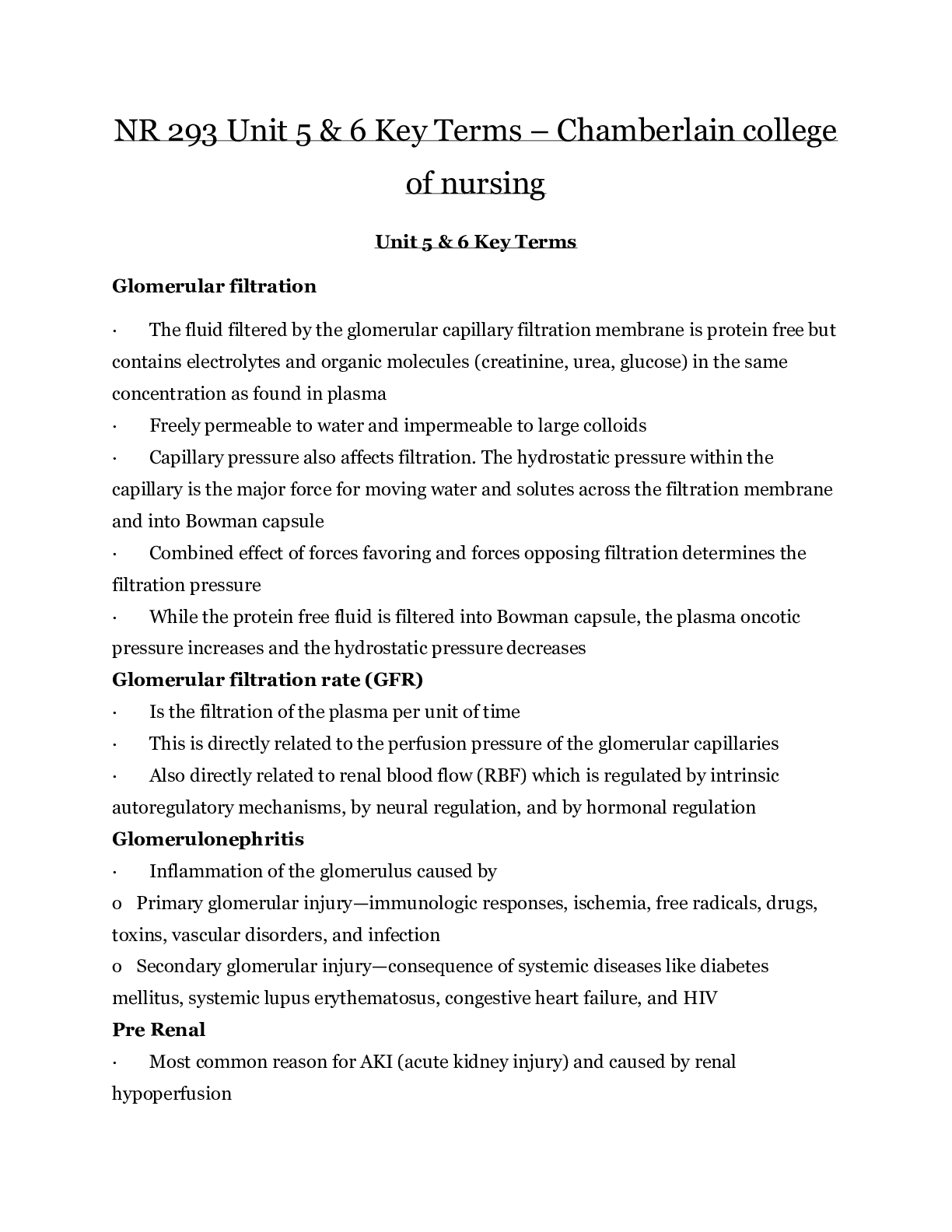
Reviews( 0 )
Document information
Connected school, study & course
About the document
Uploaded On
Jun 25, 2020
Number of pages
20
Written in
Additional information
This document has been written for:
Uploaded
Jun 25, 2020
Downloads
0
Views
30


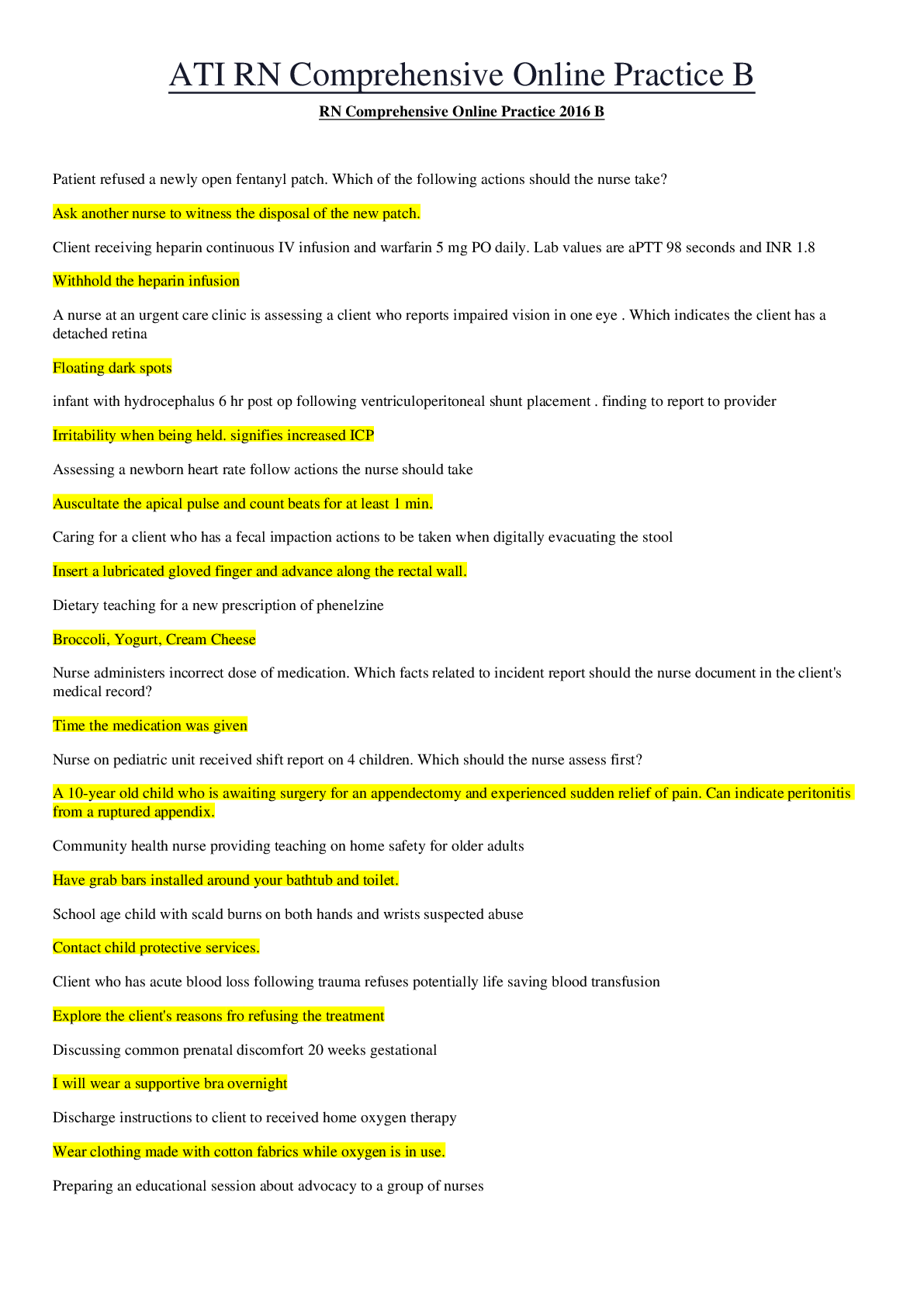
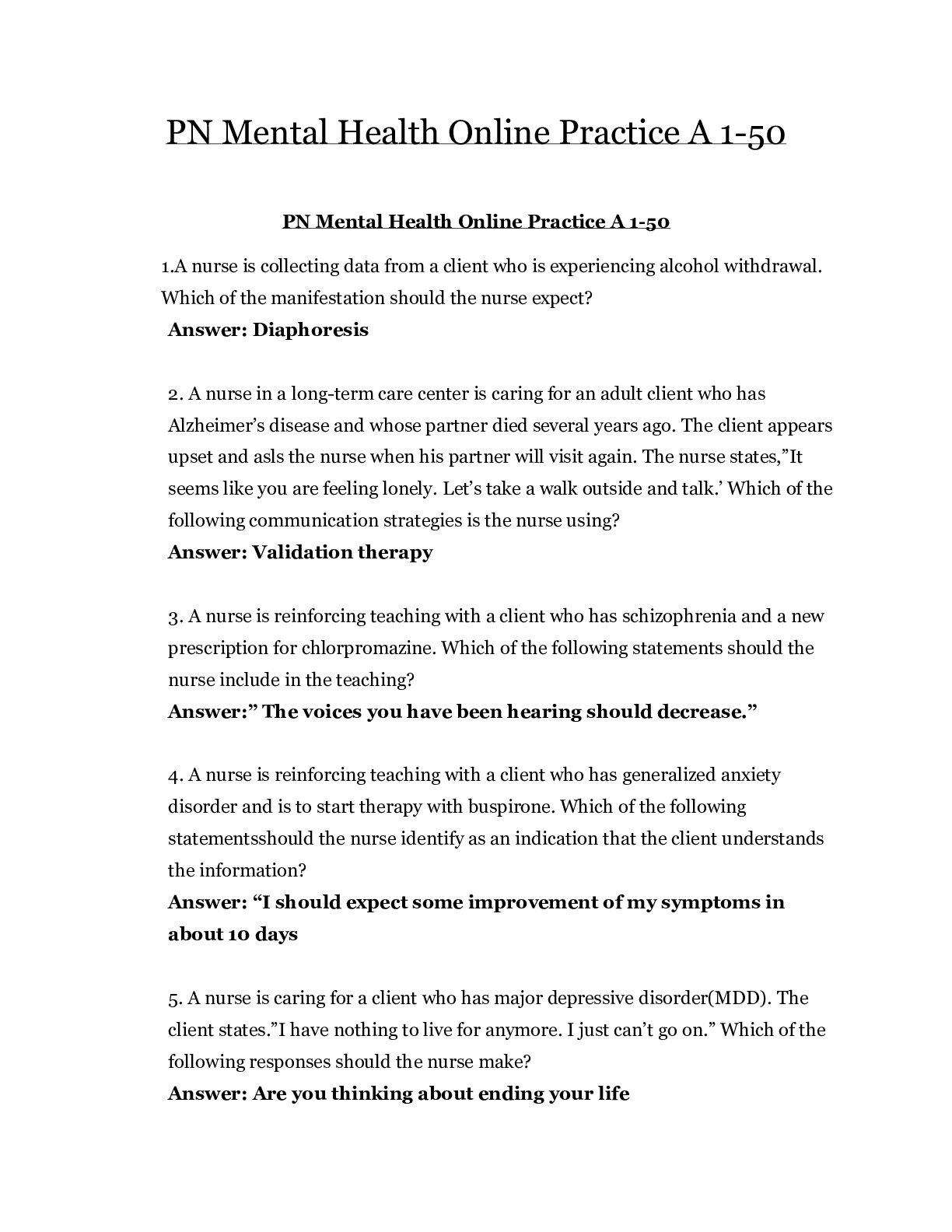
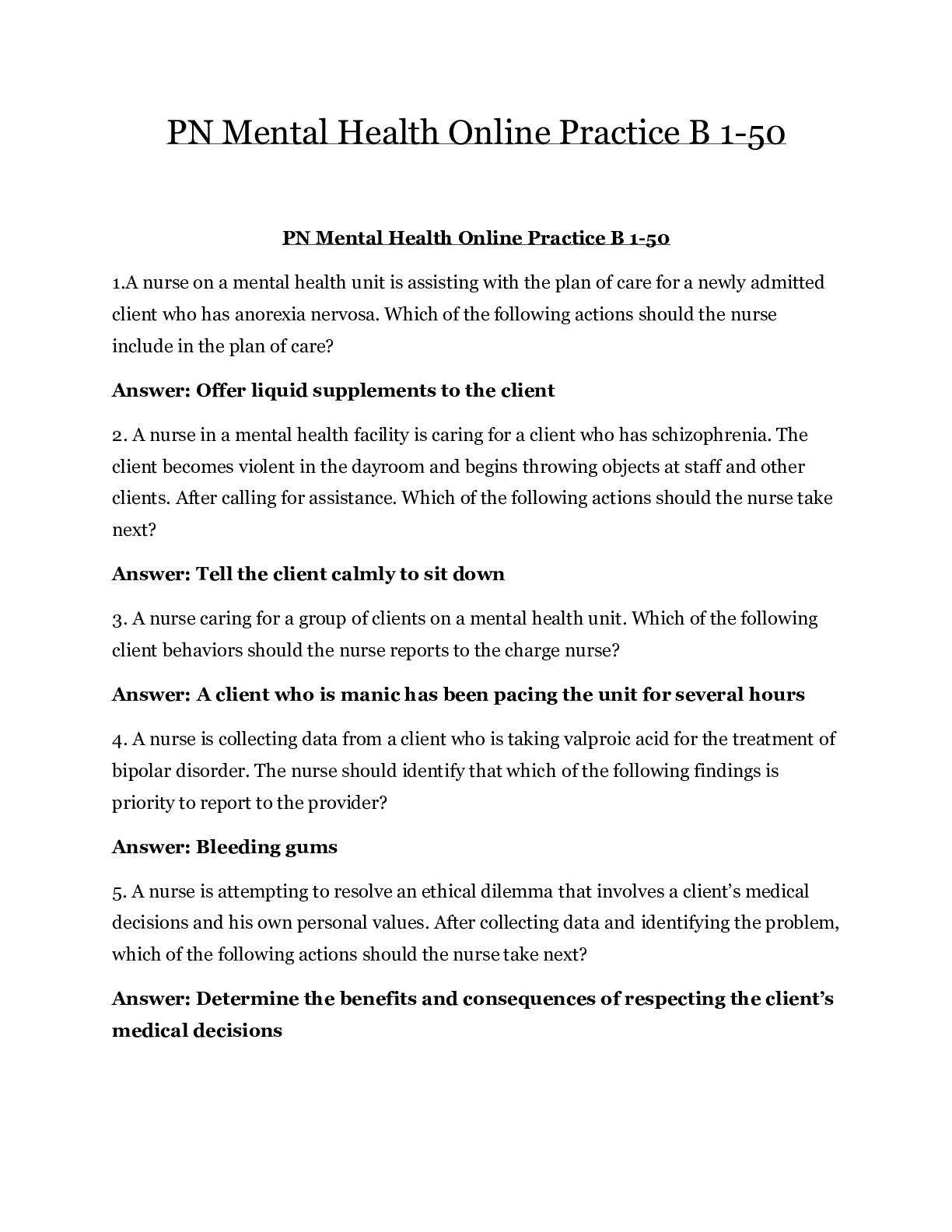
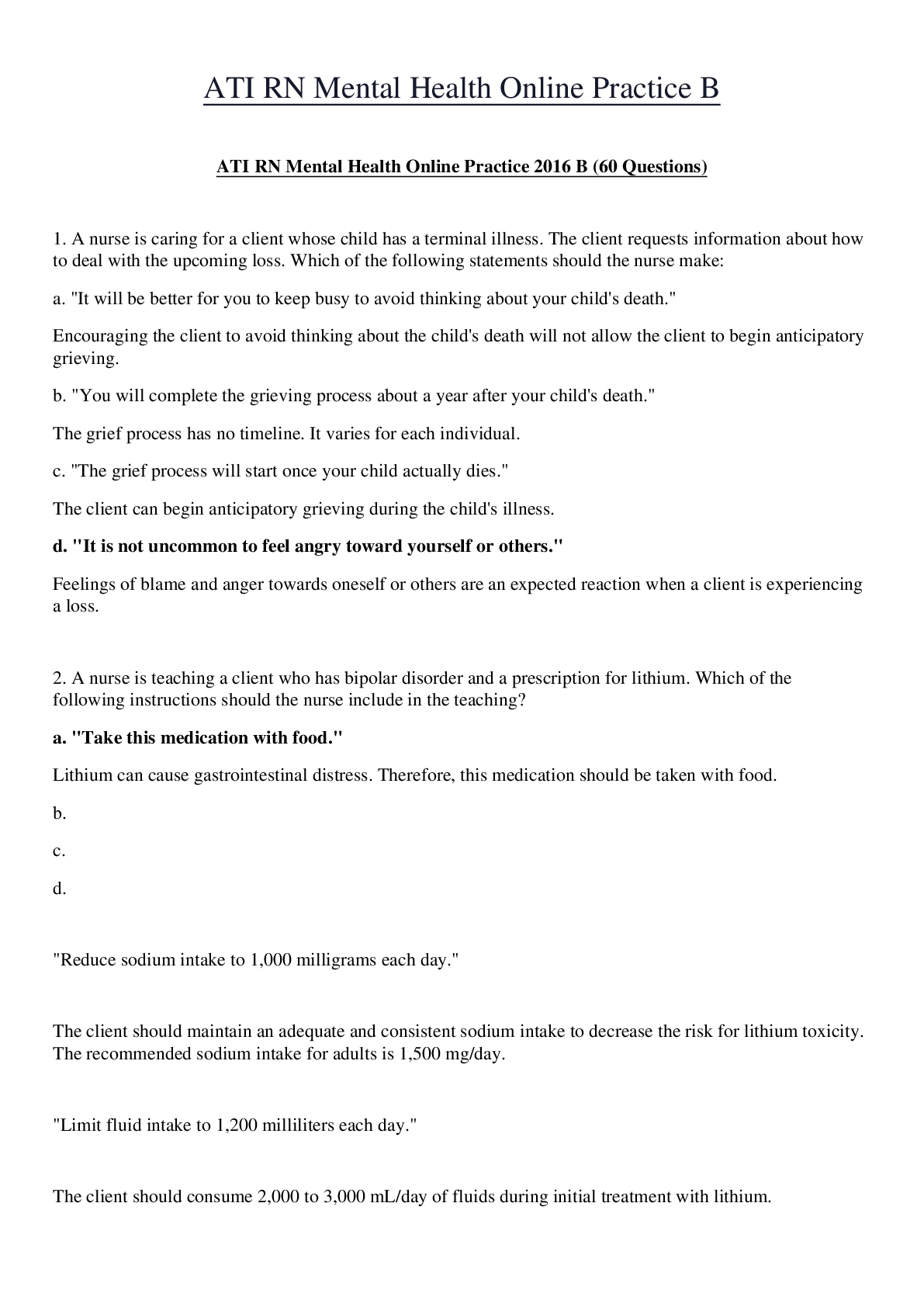

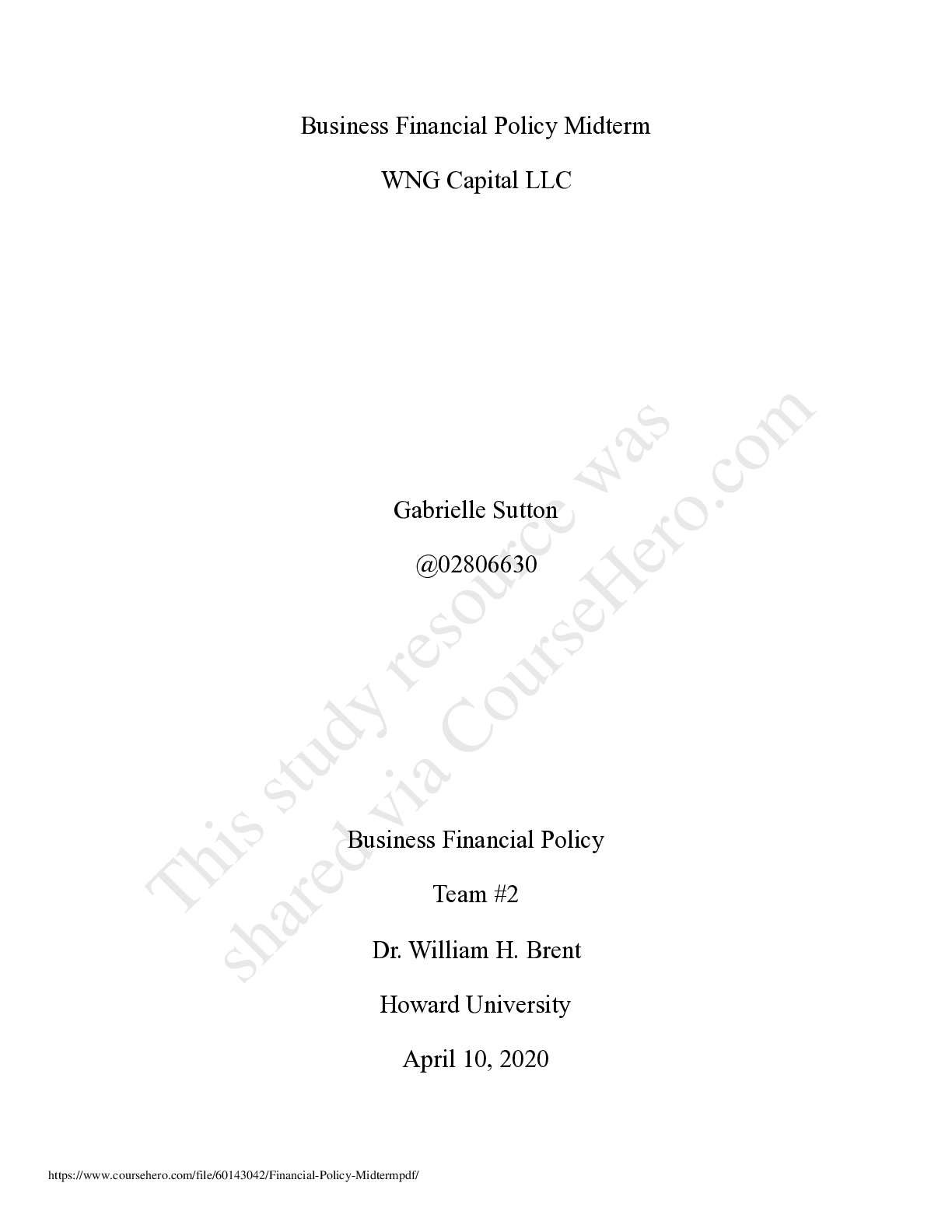
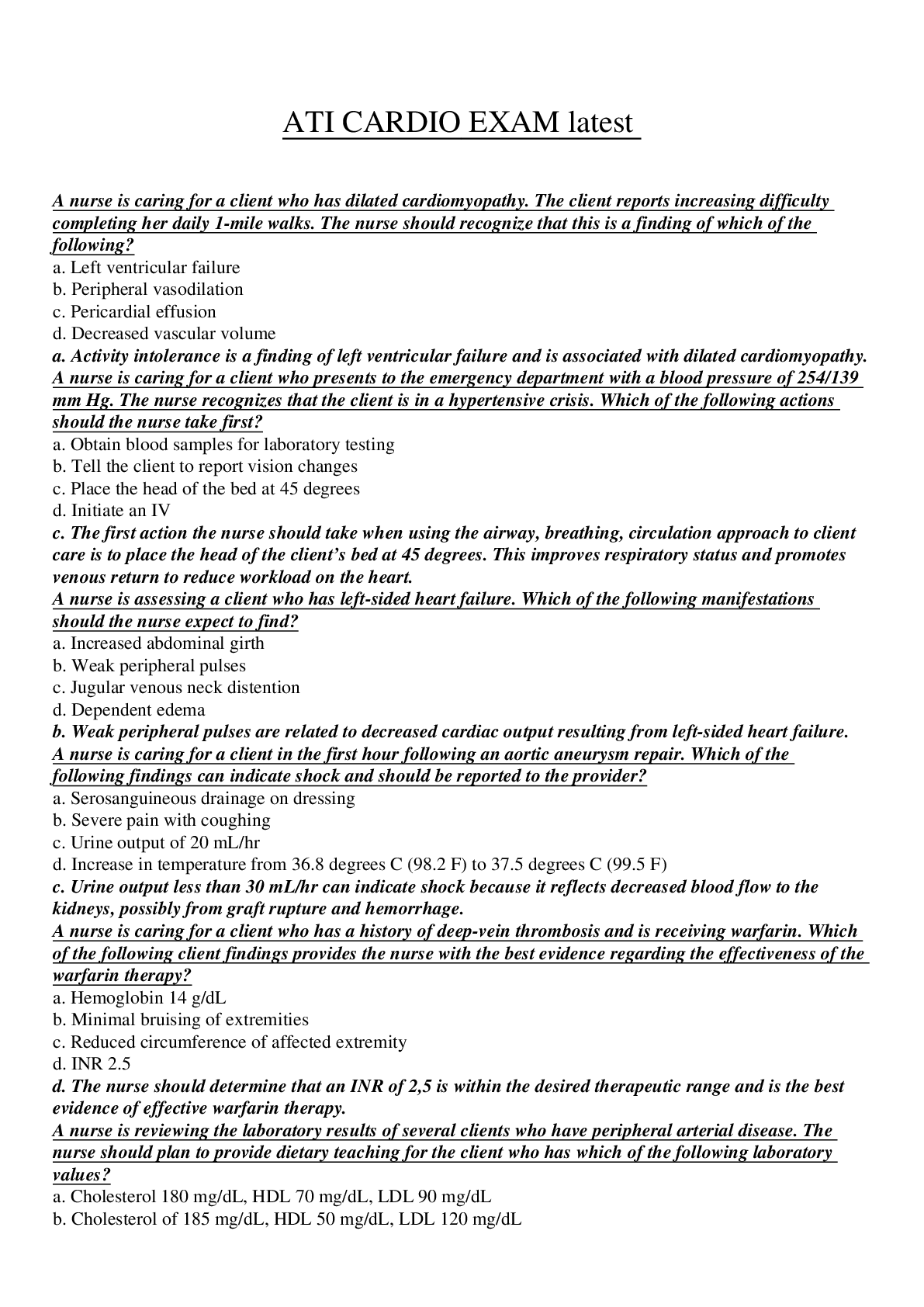
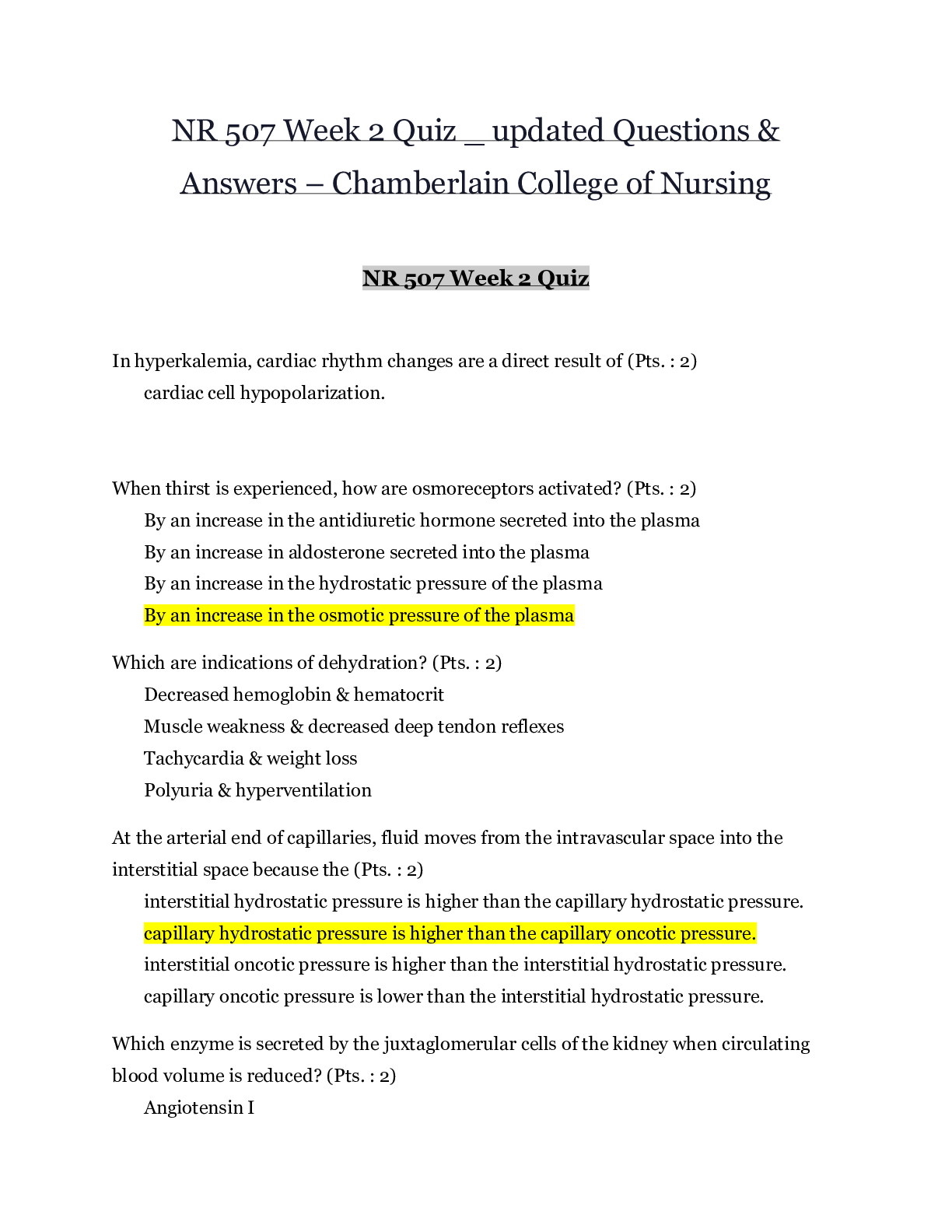
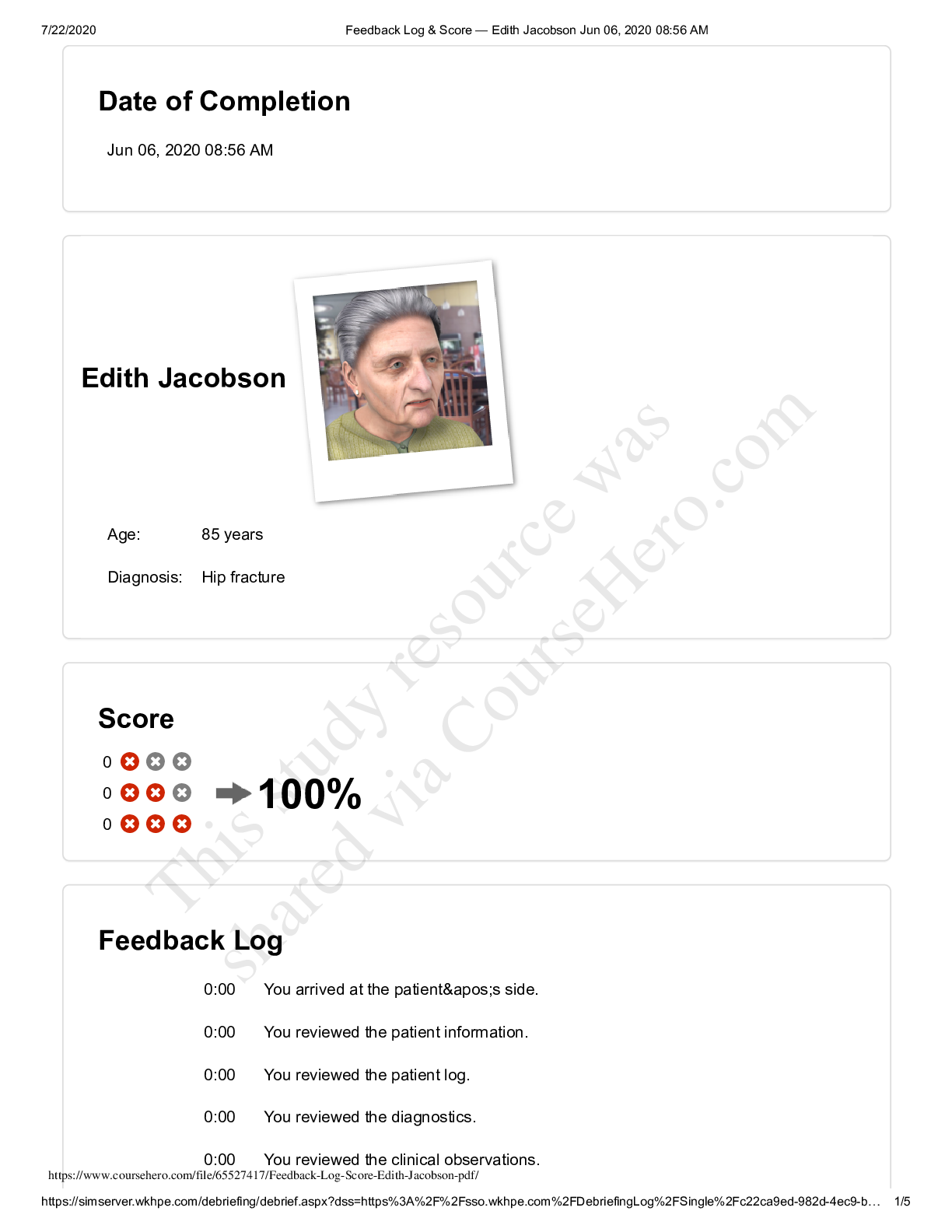
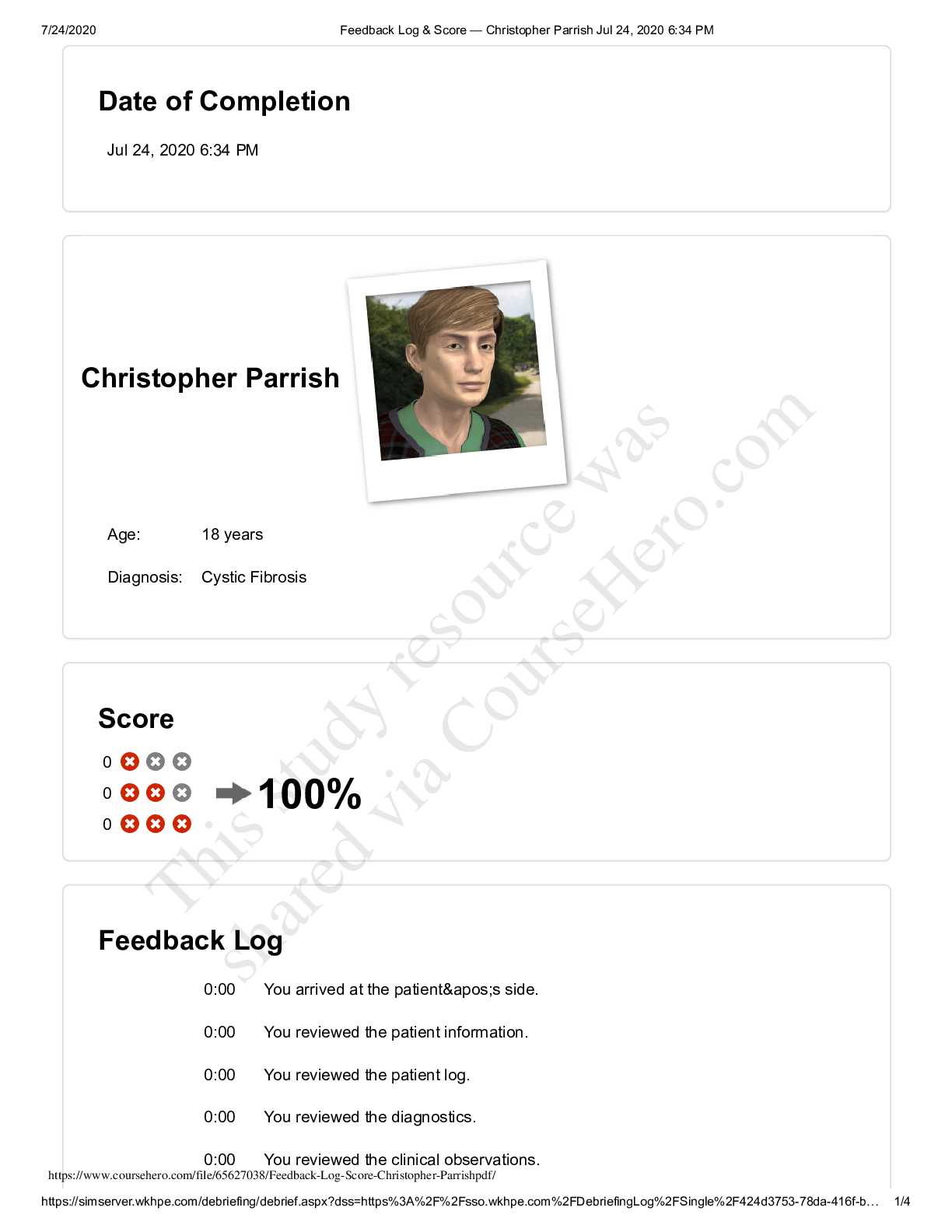
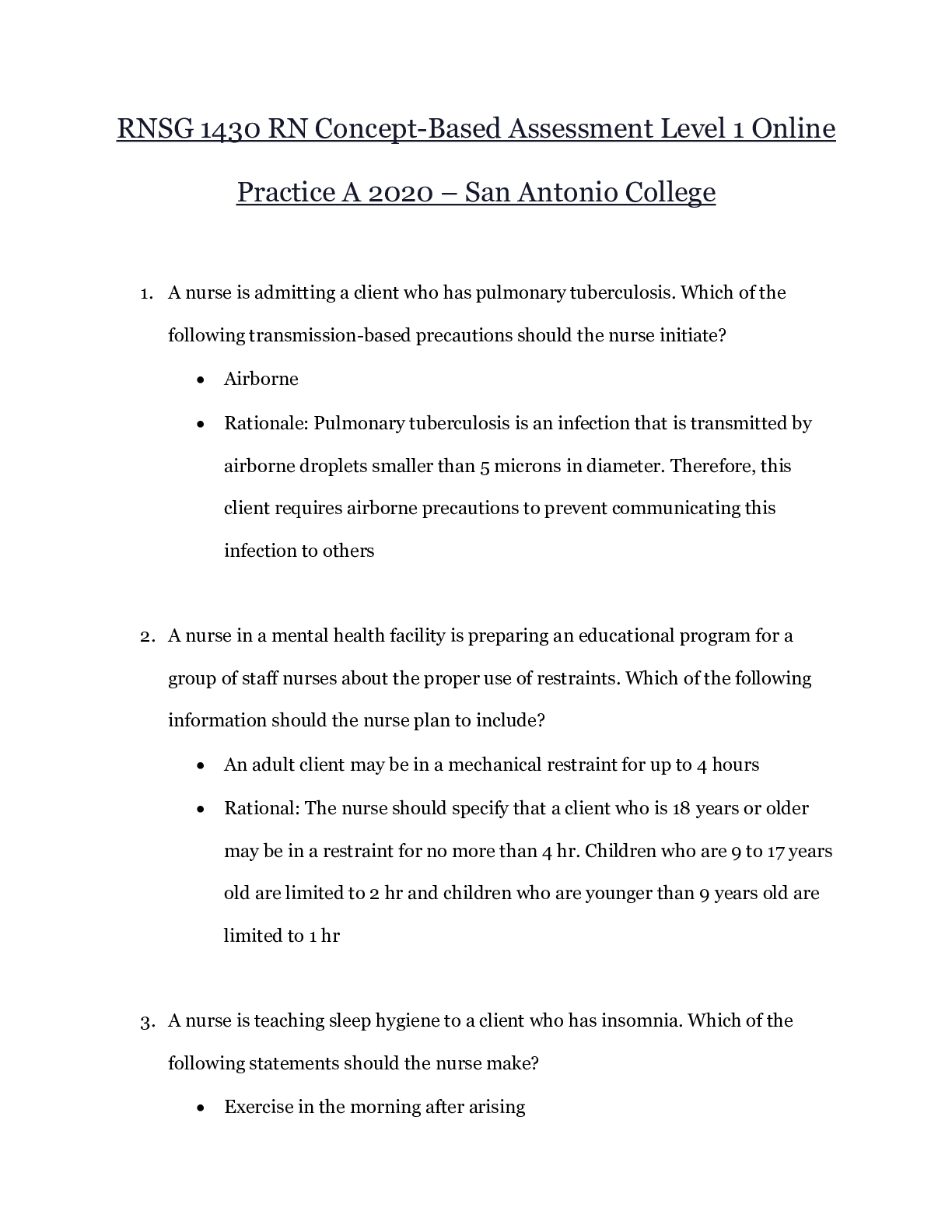


 – CHAMBERLAIN COLLEGE OF NURSING.png)
